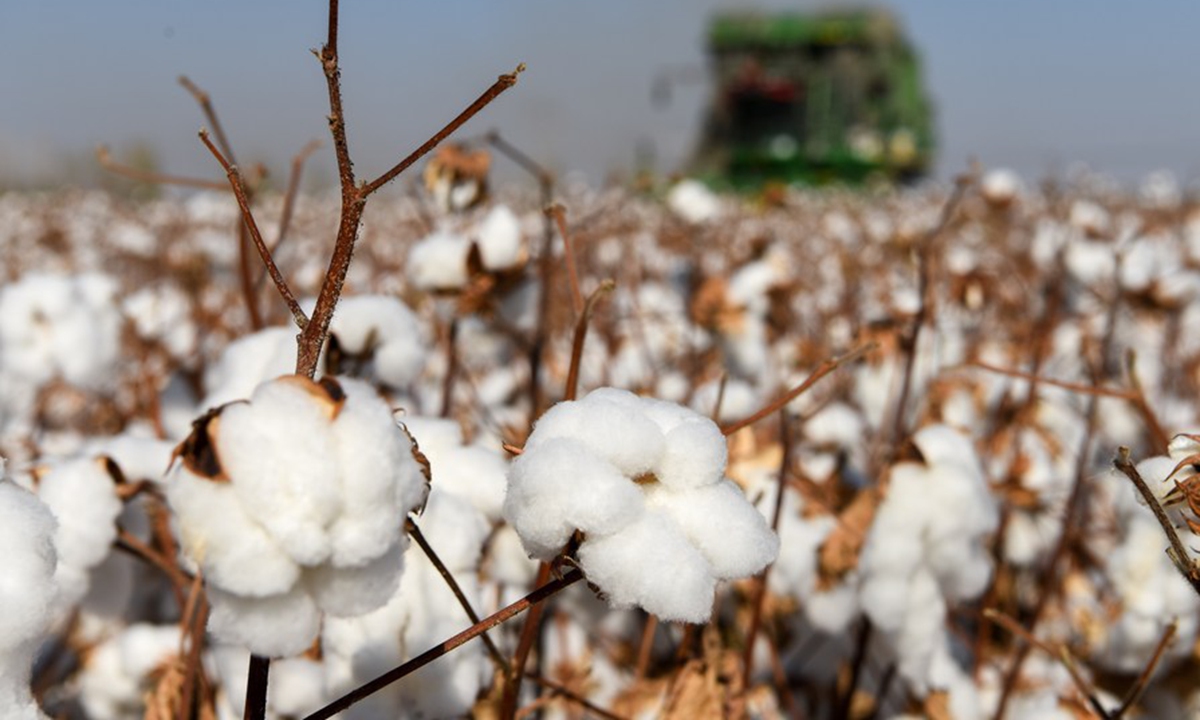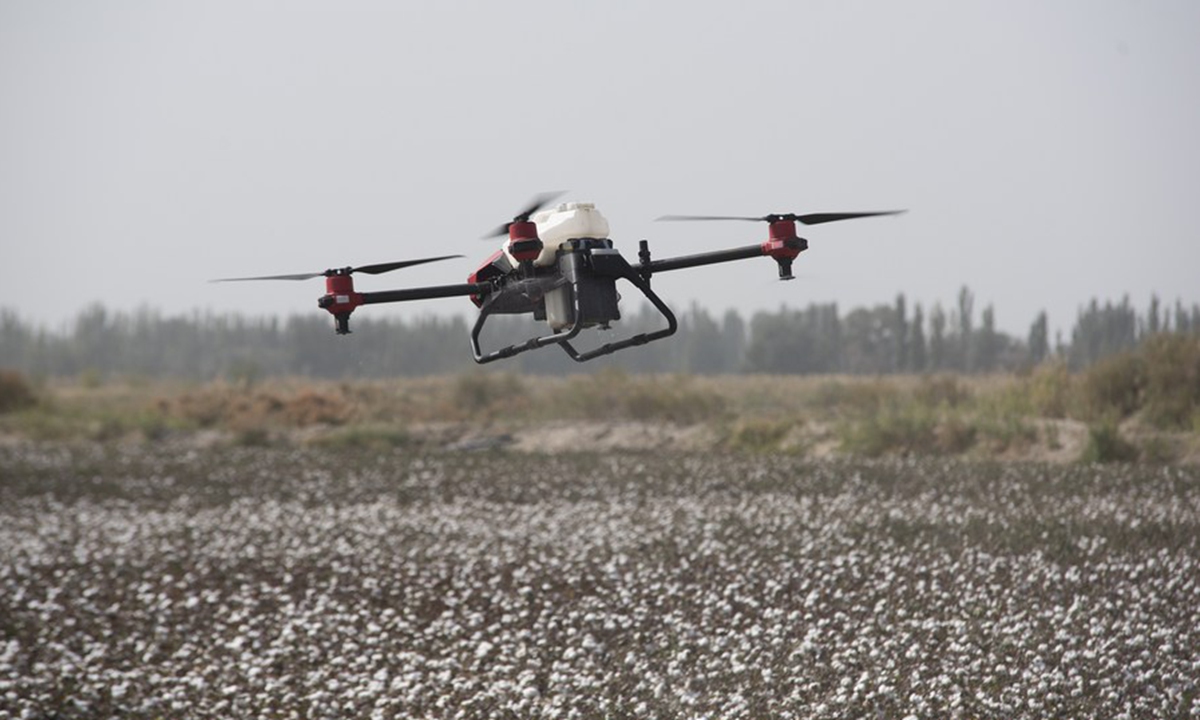Modern agriculture gaining ground in Xinjiang's cotton fields
Source: Xinhua Published: 2020/10/27 15:00:32

Modern agriculture gaining ground in Xinjiang's cotton fields
With a few clicks on a smartphone, a drone, like a giant black bird, steadily takes off with its propellers swirling into motion.
It is a common scene in the autumn cotton fields in Yuli County of northwest China's Xinjiang Uygur Autonomous Region, the largest cotton production region in the country.
With some 76,667 hectares of cotton fields, Yuli is a cotton hub in Xinjiang. Agricultural drones are widely used to spray defoliants in the harvesting season to facilitate cotton collection.
"It only took me one day to master the operation of the drone," said Zulyar Nijat, a 27-year-old college graduate in Yuli.
Zulyar was a new hand in the cotton sector. He was lured by the huge market demand and now works with his elder brother to spray defoliants for local cotton farmers.
Official data showed that Xinjiang had over 5,000 agricultural drones powered by China's BeiDou Navigation Satellite System by July, serving over 1.3 million hectares of fields.
"The orders for our agricultural drones have been growing in recent years," said Zheng Tao, vice president with XAG, a Guangzhou-headquartered agriculture technology startup which set up an operation center in Yuli to serve Xinjiang customers.
The company has also developed a system to monitor and manage cotton growing in real time. "Cotton fields in Yuli are now pilot zones for smart agriculture," said Zheng.
Besides using drones to spray defoliants and pesticides, cotton farmers now rely on a string of mechanized techniques in cotton planting and harvesting.
Over 96 percent of the cotton fields in Yuli now use cotton-picking machines as increased land transfers enable more cost-effective machinery harvesting.
Kulesi Rayim, a veteran cotton farmer who has around 87 hectares of cotton in Yuli, said it took over 200 people more than three months to handpick the crop in the harvesting season in the old days.

A drone works in the cotton field in Yuli county of northwest China's Xinjiang Uygur Autonomous Region, Sept. 23, 2020. (Xinhua/Li Zhihao)
"It was slow and expensive, and I couldn't even find enough accommodation to house them," Kulesi said.
Official data show that over 90 percent of north Xinjiang's cotton fields are now harvested by mechanical cotton pickers, while the modern practice is gaining steam in south Xinjiang.
In 2019, Xinjiang's mechanized cotton harvesting area topped 766,667 hectares, exceeding 40 percent of the regional total for the first time.
Kulesi took to cotton-picking machines in 2016. "But workers are still in need when it comes to cotton patches," he said. "The mechanical cotton pickers are not replacing them, but actually freeing them from the tiring labor to do something more rewarding in the longer term."
Posted in: SOCIETY